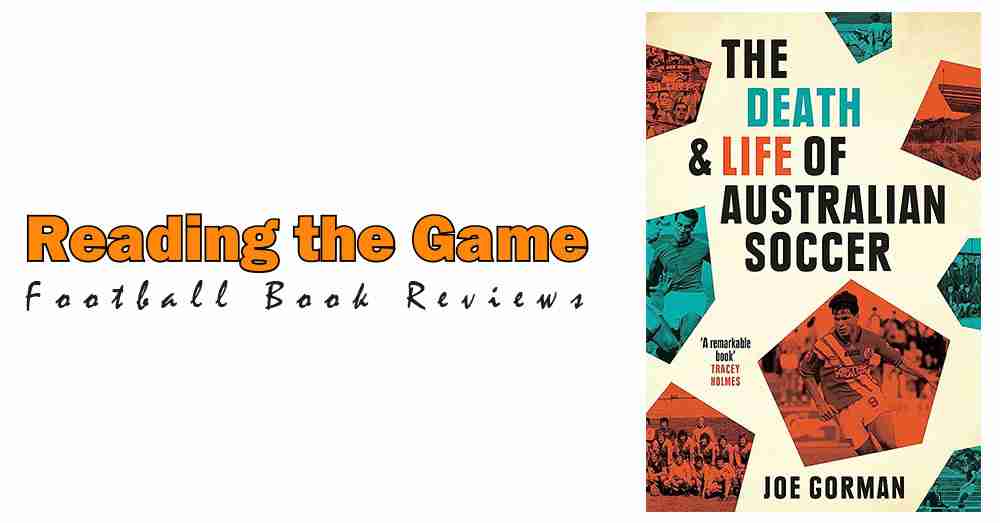Over the last few episodes of Reading the Game, there’s been a bit of a ‘globetrotting’ theme. My latest book review continues in that vein, in so far as we’re looking at The Death and Life of Australian Soccer by Joe Gorman.
This was another book that I discovered by accident on Stanchion. I bought it because, as a kid I was intrigued by the teams which appeared on the Pools coupons and Pontoon rankings throughout the summer then, as an adult, one of my favourite Prescot Cables players transferred to Corio Soccer Club. I was the club’s Programme Editor at the time and ran a few features on Corio’s results as the English season ended and the Aussie season got underway. That piqued my interest in how football had developed Down Under so, when I saw this book featured on the Stanchion website, I took the plunge.
I am very glad I did; The Death and Life of Australian Soccer is both a comprehensive history of the National Soccer League (NSL) and of the competition’s influence on the Australian sense of identity.
Like so many of the books that I’ve reviewed since starting this project, The Death and Life of Australian Soccer is only partially about the game itself. It’s also about ethnic tensions, which became interwoven with the sport after European migrants helped it to explode in popularity after arriving Down Under in the 1950s and 1960s. It’s about the idea of “being Australian” and race.
Living on the other side of the world, I knew nothing about the NSL, which was the first truly national sports League in Australia and which ran between 1977 and 2004. The competition was set up and largely dominated by “ethnic” clubs; the three most successful clubs in NSL history all won four titles each and represented different communities. Sydney City was set up by the Jewish community and now plays in State football as Maccabi Hakoah, Marconi Stallions is a club with Italian-Australian roots. South Melbourne has its roots in that city’s Greek community and originally had “Hellas” as the suffix to the team name.
Gorman criticises the NSL, referring to violence on the terraces and racism and baldly stating that the League ended its life as “a garbage fire of personal, political, factional and sectarian jealousies”. But he credits the NSL’s clubs with establishing the production line of talented players which eventually produced the ‘Golden Generation’ which qualified for the 2006 and rightly criticised the way in which the A-League was developed in a way designed to isolate the ‘ethnic’ clubs and which sabotaged the development of young Australian players.
Although the clubs which made up the NSL struggled to establish broader appeal beyond the communities which established them, they played a hugely important role in developing the sport in Australia. Gorman does a good job of illustrating that, as well as featuring personalities and events which might otherwise have faded into history.
Like The Irish Soccer Split, which I recently reviewed, this is a scholarly work, so it’s fitting that The Death and Life of Australian Soccer was published by the University of Queensland Press. The UQP website indicates that this book is a bestseller, which I think speaks volumes about both the potential for the game to grow Down Under and just how good this book is.
The Death and Life of Australian Soccer is brilliantly researched, very readable and for someone like me who was relatively ignorant about how the Beautiful Game grew up in Australia, enormously informative. It’s a worthy addition to any football library.
